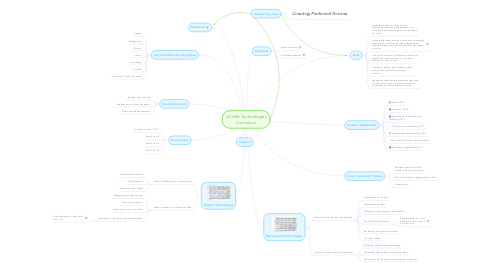ACARA Technologies Curriculum
by Robyn Windle


1. Digital Technologies
1.1. Strand: Knowledge and Understanding
1.1.1. Representation of data
1.1.2. Digital Systems
1.1.3. Interactions and impact
1.2. Strand: Processes and Production Skills
1.2.1. Managing and analysing data
1.2.2. Using digital systems
1.2.3. Creating and interacting online
1.2.4. Specification, algorithms and implementation
1.2.4.1. Example Resource: Hopscotch App: Link:
2. Subjects
3. Band Levels
3.1. Foundation to Year 2 (F-2)
3.2. Years 3 and 4
3.3. Years 5 and 6
3.4. Years 7 and 8
4. Student Diversity
4.1. Students with disability
4.2. English as an additional language
4.3. Gifted and talented students
5. Links to Other Learning Areas
5.1. English
5.2. Mathematics
5.3. Science
5.4. History
5.5. Geography
5.6. The Arts
5.7. Health and Physical Education
6. Rationale
7. Design and Technologies
7.1. Strand: Knowledge and Understanding
7.1.1. Technologies and society
7.1.2. Technologies contexts
7.1.3. Materials and technologies specialisations
7.1.4. Food and fibre production
7.1.4.1. Example Resource: From Paddock to Plate Schools Program: Link
7.1.5. Engineering principles and systems
7.1.6. Food technolgies
7.2. Strand: Processes and Production Skills
7.2.1. Critiquing, exploring and investigating
7.2.2. Generating, developing and evaluating ideas
7.2.3. Planning, producing and evaluating designed solutions
